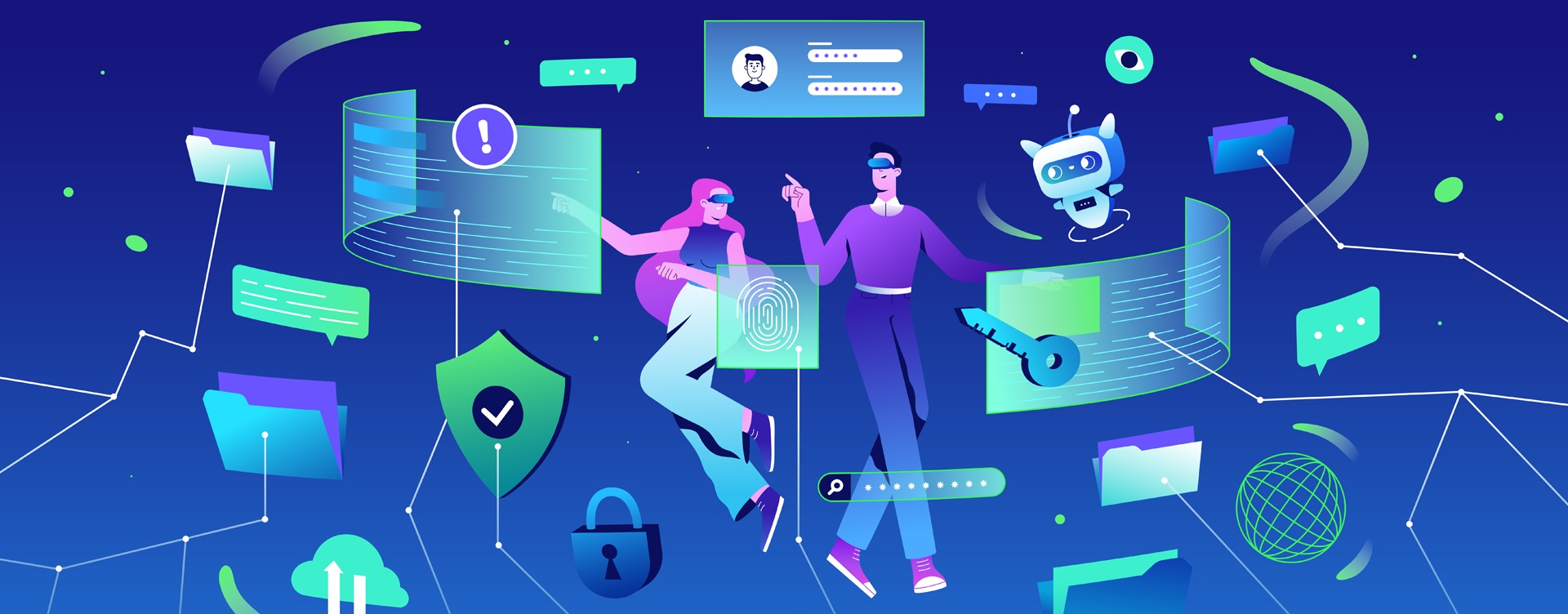Cybersecurity Best Practices for Small Businesses: Protecting Your Company in a Digital World
Menu Home Our Services Artificial Intelligence (AI) Automation Solutions Custom IT Solutions Cybersecurity Managed IT Services (MSP) About Us Blog Contact Us Back to Blog Cybersecurity Best Practices for Small Businesses: Protecting Your Company in a Digital World November 6, 2025 Running a small business today means depending on technology for almost everything sales, communication, customer relationships, accounting, and daily operations. But with this reliance comes risk. Cybercriminals know that small businesses often have limited IT resources, making them prime targets for phishing attacks, data breaches, and ransomware. The good news is that protecting your business doesn’t have to be complicated or expensive. With a few smart practices and the right tools, you can significantly reduce your exposure to cyber threats and safeguard what you’ve built. 1. Build a Strong Foundation with Employee Awareness Human error remains one of the top causes of security incidents. A single click on a malicious email or a careless password share can lead to serious damage. Start by creating a culture of cybersecurity awareness. Train your employees regularly on recognizing phishing attempts, avoiding suspicious links, and handling sensitive information responsibly. Encourage open communication if something looks odd, they should feel comfortable reporting it immediately without fear of blame. The goal is to make cybersecurity a shared responsibility across your team. 2. Keep Software and Devices Updated Hackers often exploit vulnerabilities in outdated systems, applications, and firmware. Ensuring your devices are running the latest versions of software and operating systems closes many of these security gaps. Schedule regular updates and, where possible, enable automatic updates to make the process seamless. Also, make sure your antivirus and firewall protection are active and configured correctly. These simple habits help protect your business from attacks that take advantage of old or unpatched software. 3. Secure Access with Strong Authentication Strong passwords are essential, but they’re no longer enough on their own. Multi-Factor Authentication (MFA) adds an extra layer of protection by requiring users to verify their identity with a second method, such as a code sent to their phone or an authentication app. This small step can make a huge difference in preventing unauthorized access. Some easy-to-use MFA tools for small businesses include Google Authenticator, Microsoft Authenticator, Authy, and Duo Mobile. These apps are free, quick to set up, and work seamlessly with most platforms and online services. For password management, consider tools like LastPass, 1Password, or Bitwarden. They store and encrypt your credentials securely, allowing employees to access business accounts safely without sharing passwords through insecure channels like email or chat. 4. Protect Your Data, Customer Information, and Business Network Your data is one of your most valuable assets, and protecting it is crucial to maintaining customer trust. Encrypt sensitive files and store them in secure locations, such as encrypted drives or trusted cloud platforms with strong privacy controls. Regularly back up your data to both local and cloud-based storage so that you can recover quickly if an attack or hardware failure occurs. Establish clear policies for data access, retention, and disposal, ensuring that only authorized individuals can view or edit important files. At the same time, make sure your network is protected. Your business Wi-Fi should always be secured with a strong password and WPA3 encryption. Avoid using default router credentials and change them immediately during setup. If you have employees or visitors who need internet access, create a separate guest network that is isolated from your main systems. For teams that work remotely, using a Virtual Private Network (VPN) such as NordVPN, ProtonVPN, or ExpressVPN adds another layer of protection by encrypting internet traffic and keeping sensitive data private, even on public networks. 5. Balance Security with Productivity Cybersecurity should never come at the expense of productivity. Many modern security tools are designed to work quietly in the background, keeping your systems protected without slowing down your operations. For example, platforms like Microsoft 365 Business Premium and Google Workspace offer built-in security features such as identity management, spam filtering, and endpoint protection all while keeping teams productive and connected. Automating routine tasks like software updates, password resets, and backups can save time and reduce the chance of human error. 6. Stay Informed, Improve Continuously, and Partner with Experts Cybersecurity is not a one-time effort; it’s an ongoing process. Threats evolve, and so should your defenses. Make it a habit to review your company’s security policies, evaluate new tools, and stay informed about the latest scams and vulnerabilities. Many resources, including government sites and industry newsletters, provide free alerts and best practices tailored for small businesses. Staying proactive helps you anticipate risks and respond quickly before they escalate. As a small business owner, your focus should be on growth and serving your clients—not constantly worrying about digital threats. That’s where 101 IT can help. We provide affordable, scalable cybersecurity solutions designed for small businesses, helping you implement practical protections that align with your goals. From setting up secure systems and MFA tools to monitoring threats and training your team, our mission is to help you operate with confidence in today’s connected world. Visit us at 101-it.com to learn more about how we can help your business stay secure, efficient, and ready for the future. Enjoyed this article? Share it with your network! Get in Touch with Us Ready to elevate your IT? Whether you’re in the Greater Toronto Area (GTA), Ontario, or anywhere across Canada, we’re here to help your business grow and thrive. Let’s start the conversation today! Contact Us Today Copyright © | Powered by










